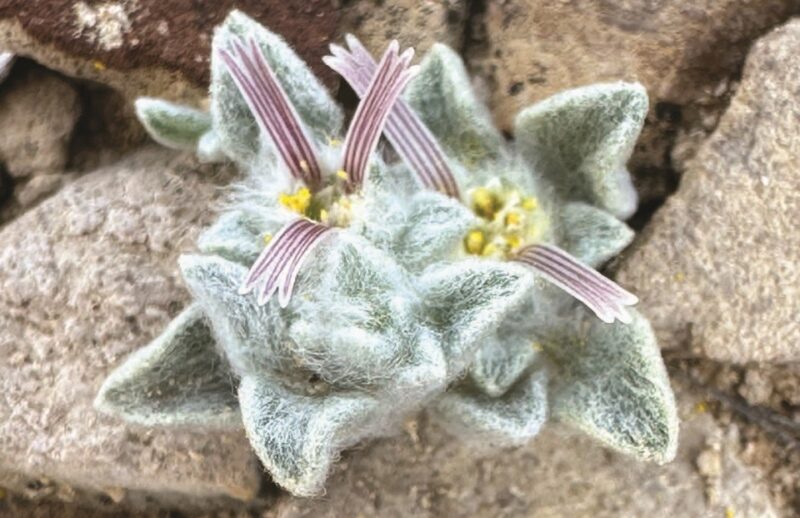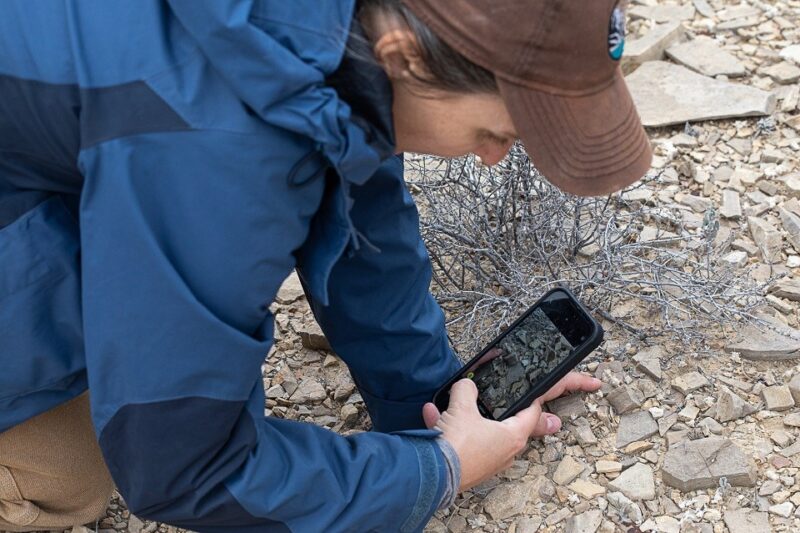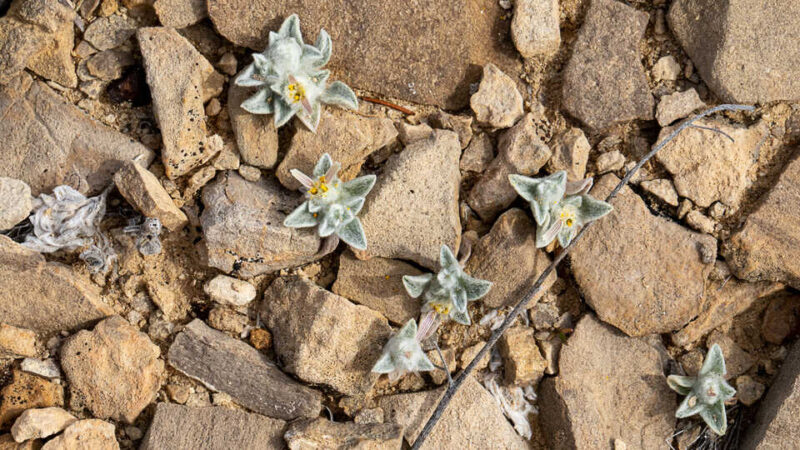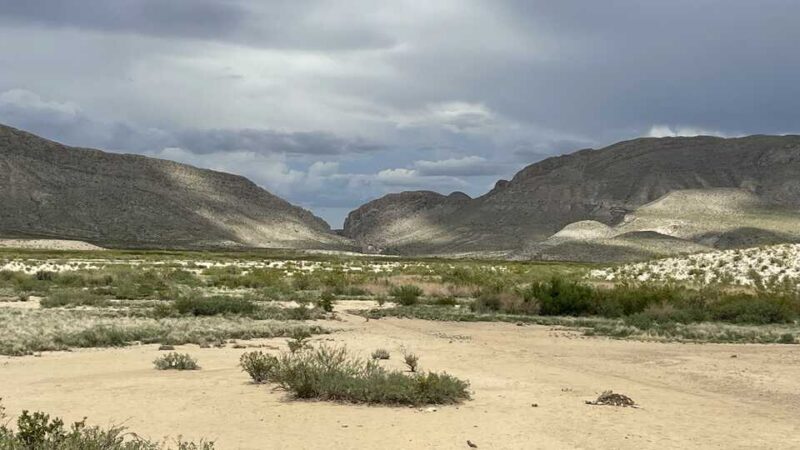
New plant species: Wooly devil
Big Bend National Park in southwest Texas is home to more than 1,200 species of plants. And now you can add one more to that list. In March 2024, staff members Carolyn Whiting, Deb Manley and Patty Manning were in a remote northern region of the park when they spotted a tiny flower with fuzzy foliage they didn’t recognize. After consulting with experts and sharing images on iNaturalist, they realized they’d found something new. On February 24, 2025, the National Park Service said the new plant species – a member of the Asteraceae family – is previously unknown to science.
Genetic analysis showed the plant was a completely new genus inside the Asteraceae family. This is the family to which flowers such as daisies and sunflowers belong. The researchers named the plant “wooly devil” (Ovicula biradiata) based on its unusual appearance. Ovicula means tiny sheep, referring to its small, fuzzy nature. And biradiata stands for bi-radial, referring to the two pink-and-white protrusions.
Researchers from the California Academy of Sciences, among other institutions, published their peer-reviewed research in the journal PhytoKeys on February 18, 2025.
A rare discovery
This is a rare discovery. In fact, the California Academy of Sciences said:
It marks the first time a new plant genus was described in a national park since the mountain-dwelling shrub July gold (Dedeckera eurekensis) was found in Death Valley National Park in 1976.
Co-author Isaac Lichter Marck of the California Academy of Sciences said:
While many assume that the plants and animals within our country’s national parks have probably been documented by now, scientists still make surprising new discoveries in these iconic protected landscapes. O. biradiata is a member of the sunflower family, although it does not resemble its sunburst-shaped relatives at first glance. After sequencing its DNA and comparing it with other specimens in the Academy’s herbarium, we discovered that this small, fuzzy plant is not only a new species within the sunflower group, but it is also distinct enough from its closest relatives to warrant an entirely new genus.
Whiting said:
Now that the species has been identified and named, there is a tremendous amount we have yet to learn about it. I’m excited to discover whether there are other populations in the park, the details of its life cycle, what pollinates it, and whether we’ll observe it this spring, given the current drought.

Fit for a harsh environment
The new plant lives in a harsh, hot, arid and rocky environment. The plant only blooms after a rainfall. Lichter Marck said:
Plants that thrive in deserts are often quite unique, having evolved specific mechanisms to withstand the extreme drought-and-deluge conditions of these arid landscapes … from water-storing structures to rapid life cycles triggered by rain. But as climate change pushes deserts to become hotter and drier, highly specialized plants like the wooly devil face extinction. We have only observed this plant in three narrow locations across the northernmost corner of the park, and it’s possible that we’ve documented a species that is already on its way out.

Wooly devil could be a saint
While there’s much to learn about the new plant, it could turn out to be important in the medical world. Co-author Keily Peralta of the California Academy of Sciences said:
Under the microscope, we noticed specific glands that are known to possess compounds with anti-cancer and anti-inflammatory properties in other plants within the sunflower family. While further research is needed to determine these properties, this discovery underscores the potential knowledge we stand to gain from preserving plant diversity in fragile desert ecosystems.

Bottom line: Staffers at Big Bend National Park have discovered a new plant species. The fuzzy white flowering plant is named wooly devil.
Via California Academy of Sciences
Read more: Big Bend National Park designated as an International Dark Sky Park
Source link
Read More
thesportsocean
Read our previous article: Rover Finds the Shoreline of an Ancient Beach on Mars